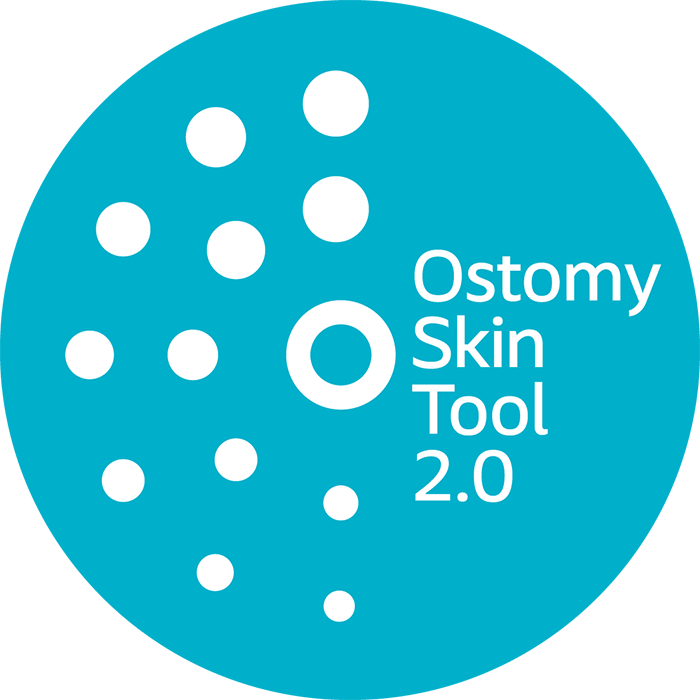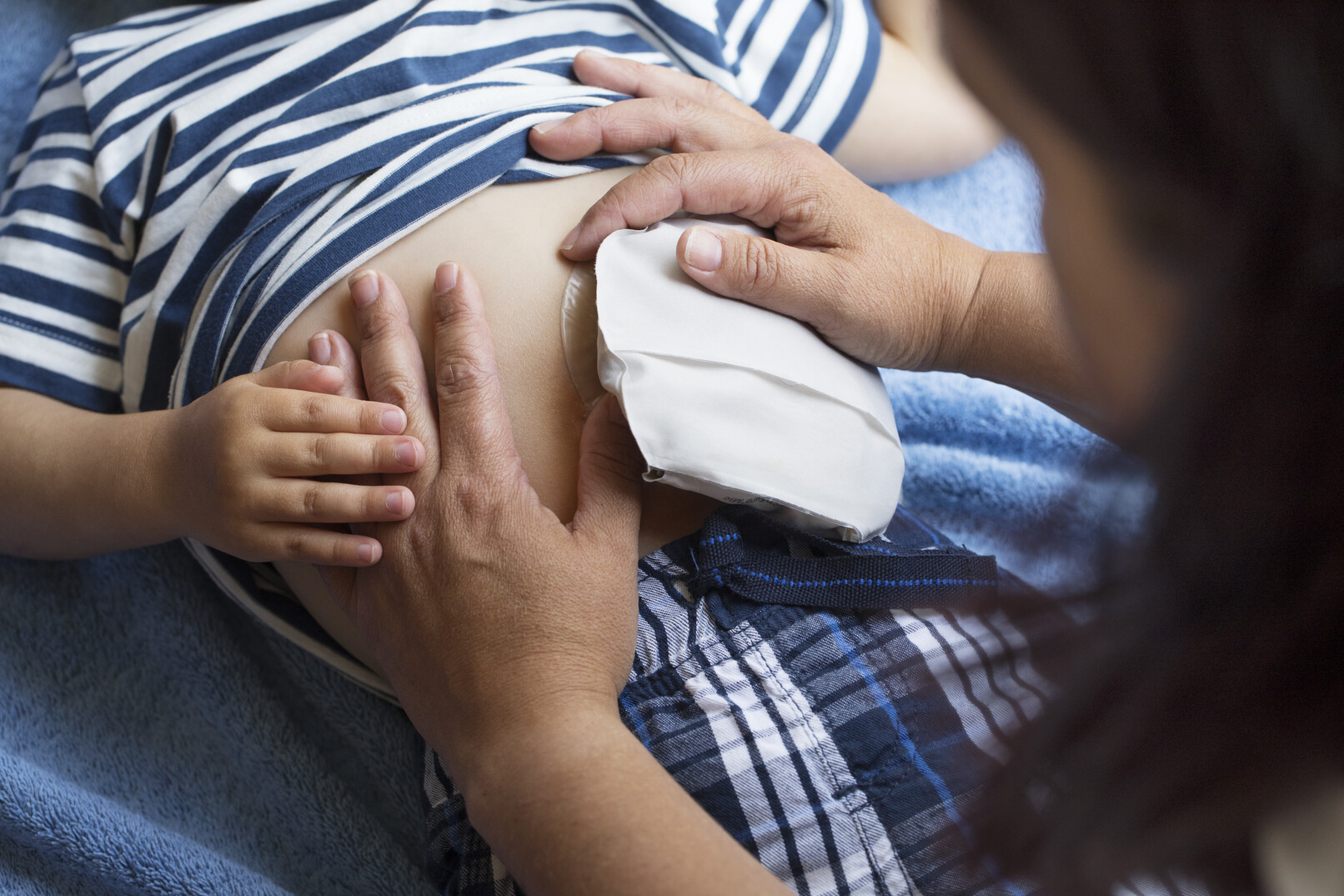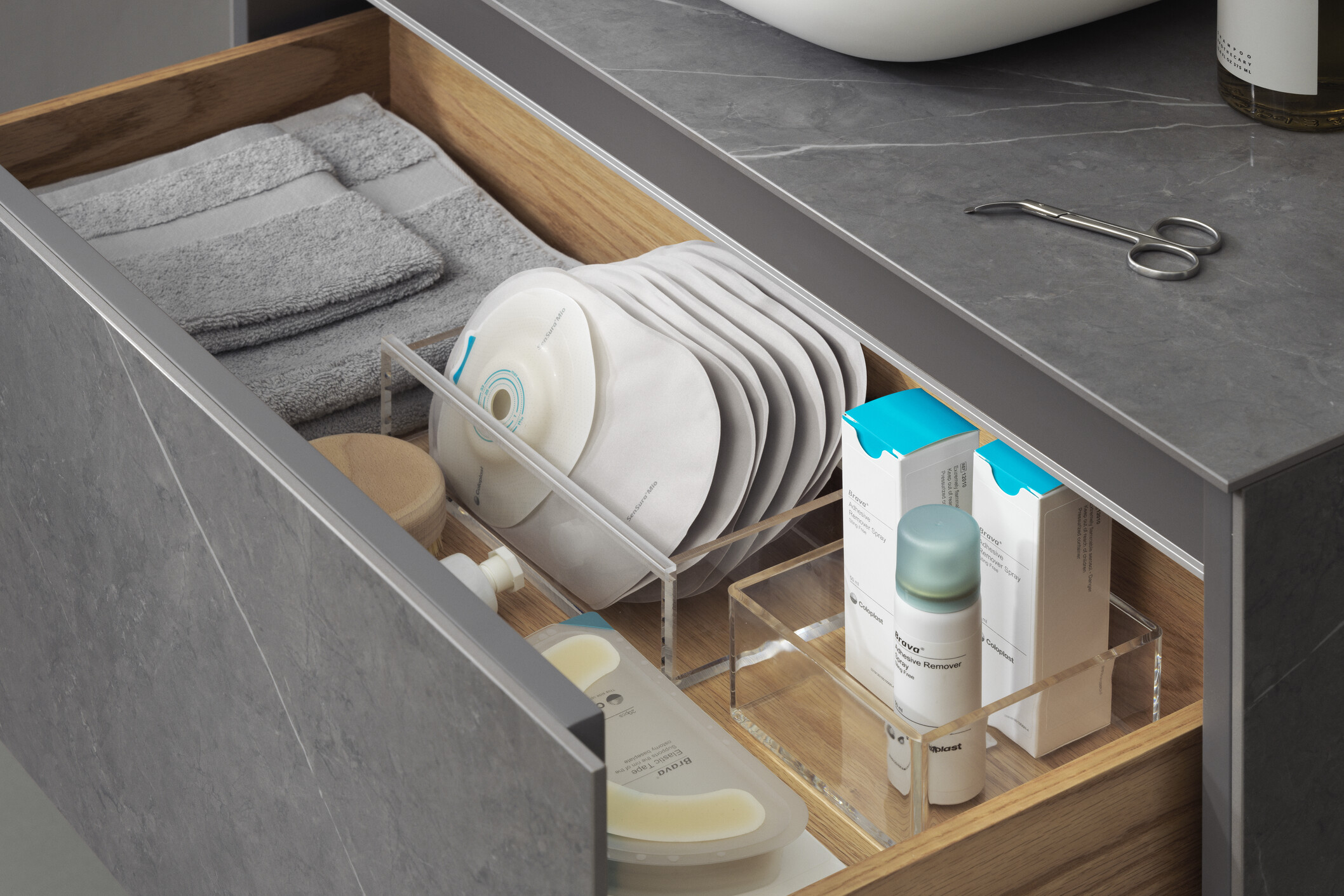
Find the right resources to support patients
Starting on a new product or treatment can be difficult. Find the tools you need to train and guide your patients into good management routines.
Tools to prevent peristomal skin complications (PSC)

OST 2.0 – assess both visual and non-visual PSC symptoms
75% of people living with a stoma experience PSC symptoms without peristomal discolouration.1 Being able to assess non-visual symptoms is another step to help prevent PSCs.
The newly revised ostomy skin tool, OST 2.0 features a patient-reported outcome (PRO) questionnaire which enables you to evaluate non-visual symptoms such as pain, itching and burning during patient consultations.
The OST 2.0 note pad guide comprises the PRO questionnaire, note-taking pad with space to illustrate any discoloured areas around the stoma and a decision tree model to assess the level of severity.
Download to use in your practice
Click here to order your own printed copy
1. Martins, L. et al., The Ostomy Skin Tool 2.0: a new instrument for assessing peristomal skin changes, BJN, 2022, Vol 31, No 8

Peristomal Skin Complications Risk Factor Model
Leakage and PSC are the most common issues among people living with a stoma, with 77% having experienced leakage within the last month and 88% having experienced skin complications at some time.1 The PSC Risk Factor Model was developed to help healthcare professionals better meet individual needs – it should be used as a tool for assessing patients’ specific needs in daily practice. By managing these risks and initiating the appropriate intervention, it’s possible to prevent the physical burden of peristomal skin complications (PSC) and improve life for people living with a stoma.
Learn more about the Risk Factor model and share it with your patients and colleagues:
1. Ostomy Life Study 2019, Consumer survey, Coloplast, Data on file, PM-10499.

Easy to follow stoma care guidelines for babies & kids
There’s a lot to remember when practicing stoma care – especially for babies and children. Below are two single-page documents, to guide you through the key aspects of best practice in paediatric stoma care, covering; basic stoma care, assessment of the peristomal skin and stoma, cleansing the peristomal skin, selecting and applying the right product, wear-time and discharge guidance. Both are available for you to read and download.
Guide your patients to the right solution and routines

Troubleshooter
Find advice and solutions to help solve common issues such as leakage or skin complications.

BodyCheck
Chances are that the body shape has changed since the surgery. Check the body profile and stoma type to find the right solution.

Stoma Care Routines
Help your patients learn appropriate stoma care routines for applying and removing their baseplate to keep their skin healthy.
Patient support programs and apps

Personalised support for your patients
Coloplast Care is a support program for people with a stoma, which offers them a helping hand along with advice and inspiration for their daily life.

Register your patients for Coloplast Care
As a healthcare professional you can register your patient with Coloplast Care and ensure they get a good start on their journey with Coloplast products.

How-to videos
No patient is the same, but they may encounter similar challenges. In this section, we share practical advice and guidelines on how to tackle common patient and clinical challenges.

Surgical animations
Support your patient's understanding of their ostomy, before or after surgery, with these short and easy to understand animations.




